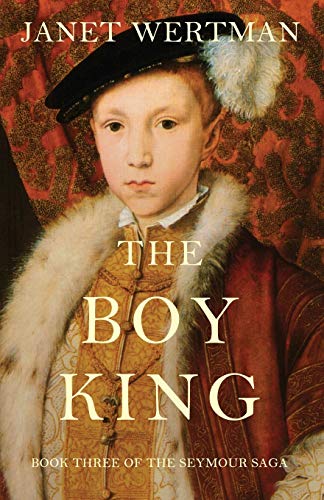The Boy King (The Seymour Saga)
Edward Tudor is nine years old when his father, King Henry VIII, dies and he assumes the throne of England in 1547. In the next six years, until his death, King Edward VI oversees a kingdom beset by conflict within—landlords vs. peasants, religious reformers vs. followers of the traditional Catholic Church—external threats from France and Spain, and war with Scotland.
In the Council of Regency, named by King Henry in his will to assist the young king, are rivalries between Edward’s uncles, Thomas Seymour and Edward, Duke of Somerset. Within his family is opposition from half-sister Mary, daughter of Catherine of Aragon and fierce proponent of Catholicism.
The Boy King is third in author Wertman’s Seymour Saga. Reflecting Wertman’s passion for the Tudors, the book is layered in detail. Each chapter captures a day in the king’s reign, revealing the actions of those who seek influence over his decisions and exploring his own reactions. It presents the dilemmas faced by a boy thrust into a role few could hope to fill, providing glimpses of youthful impatience with ritual, uncertainties and trepidations about making decisions that affect the lives of the people the king rules as well as the men and women who serve him, small triumphs in acquiring skills in pastimes he enjoys, such as falconry, and the isolation and loneliness that comes with power.
Heavy with facts, the narrative is sometimes overwhelming. The focus on specific days in the king’s life interferes with dropping seeds of dramatic plotting that propel readers along. The overall effect is nonetheless impressive.










